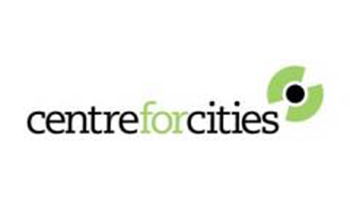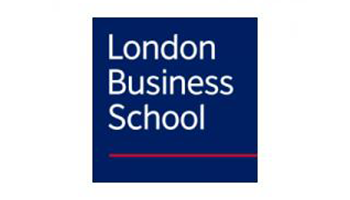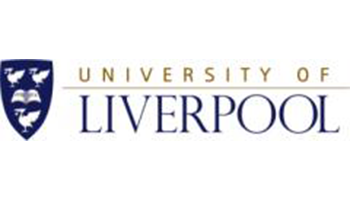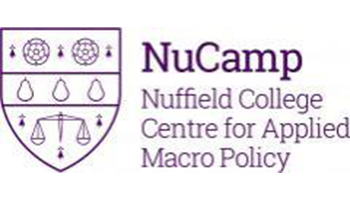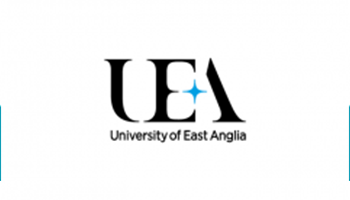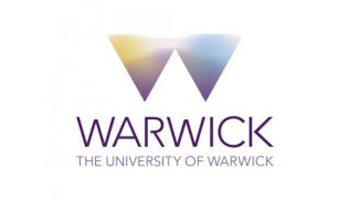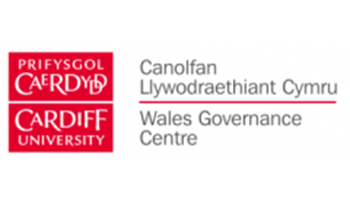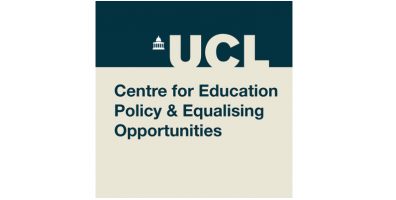The Hundred cricket competition will soon have a new ownership structure. The sale of franchises will provide funds for the sport’s grassroots. But differences in the types of owners and ownership structures may bring bigger changes, including to TV rights and the county game.
The England and Wales Cricket Board (ECB) is close to finalising the sale of shares in the Hundred franchises – the eight teams in the competition launched in 2021 – to private investors, raising over £500 million in revenue.
The investors include the owners of several Indian Premier League (IPL) franchises and Todd Boehly, co-owner and chairman of Chelsea football club (FC). This change in ownership could have significant implications for both the Hundred competition and the sport more widely.
Why was the Hundred competition created – and why are the franchises now being sold to private investors?
The Hundred cricket competition was launched by the ECB in 2021 with the ambition of taking cricket to a wider audience. Eight new city-based franchises were created – Birmingham Phoenix, London Spirit, Manchester Originals, Northern Superchargers, Oval Invincibles, Southern Brave, Trent Rockets and Welsh Fire – and a new format designed to provide short matches that would appeal to newcomers attending games and watching on TV.
The highest level of domestic cricket in England and Wales has traditionally been made up of 18 county teams. Seven of these counties plus Marylebone Cricket Club (MCC), which owns Lord’s cricket ground in London (where county team Middlesex are based), each host one of the Hundred franchise teams.
The Hundred competition is run by the ECB, which controls sponsorship, the sale of TV rights and merchandising. The ECB then shares revenues raised from the competition with all the counties (as part of a broader agreement of financial support). The host counties also receive hosting fees and additional revenue from ticket sales, stadium hospitality and catering.
In 2024, the ECB started to pursue the idea of selling at least part ownership of these teams to private investors. It was hoped that this would bring in vital revenue to support the game of cricket, both at the recreational and domestic competition levels.
How is the Hundred structured?
The Hundred competition is very different from many sports leagues that operate in the UK (and Europe more widely). In football, for example, England has a league structure with the Premier League at the top, then the Championship, League One and League Two below this, and many semi-professional and amateur grassroots levels even further down. Promotion and relegation at the end of each season allows teams to move between these levels.
Systems of this kind are referred to by economists as open leagues. In contrast, in the Hundred, the same eight teams (in the men’s and women’s competitions) compete against each other every season – a system that economists call a closed league. Such arrangements are more common in US sports such as American football, baseball and basketball. Sports economists study the features of these different types of league structure (see, for example, Szymanski, 2012).
In closed leagues, as in the Hundred, many features – including sponsorship and TV contracts – are managed centrally by the league. In addition, regulations are in place to ensure financial stability and that the games between teams are competitively balanced. In both the Hundred and the IPL, auctions are used to allocate players between teams, and there are strict salary caps are in place.
Who has bought the Hundred franchises – and how much did they pay?
To facilitate the sale of the franchises, in 2024, the ECB gave 51% of each franchise to the host county (or MCC). The ECB then retained a 49% share in each franchise, which they would sell to private investors.
Eventually, after some bargaining from the domestic counties, it was agreed that revenue raised from selling the ECB’s share would see 10% given to the recreational game. Then, the next £275 million would be split 19 equal ways between the 18 counties and MCC, the next £150 million split 11 ways between the non-host counties, and any remaining revenue split equally between the 19 again.
The counties would also be able to sell some, or all, of their shares. If they chose to do so, they would get to keep 80% of the revenue raised, 10% would again be given to the recreational game, and the remaining 10% shared between the other counties and MCC.
In January 2025, bidding on the franchises started. Table 1 summarises how much each of the hosts has agreed to sell, who has agreed to buy the share in the franchise and how much they will pay for it. To aid comparisons, the final column shows the effective value of the franchise had they purchased 100% of it.
Table 1: Sale of the Hundred franchises
| Franchise | Stake sold by the hosts (%) | Purchaser | Price paid (£ million) | Franchise valuation (£ million) |
| Birmingham Phoenix | 0 | Knighthead Capital Management, a New York-based investment firm | 40 | 82 |
| London Spirit | 0 | A consortium of Silicon Valley technology entrepreneurs | 145 | 296 |
| Manchester Originals | 21 | RPSG Group, Sanjiv Goenka's conglomerate (owners of Lucknow Super Giants, an IPL franchise) | 81 | 116 |
| Northern Superchargers | 51 | Sun Group, a media conglomerate (owners of Sunrisers Hyderabad, an IPL franchise) | 100 | 100 |
| Oval Invincibles | 0 | Reliance Industries (owners of Mumbai Indians, an IPL franchise) | 60 | 122 |
| Southern Brave | 0 | GMR Group, another Indian conglomerate (co-owners of Delhi Capitals, an IPL franchise) | 48 | 98 |
| Trent Rockets | 0 | Cain International, backed by Chelsea FC co-owner Todd Boehly, and several investment firms | 40 | 82 |
| Welsh Fire | 0 | Sanjay Govil, an Indian-American technology entrepreneur | 40 | 82 |
Sources: ESPN, 2025a; ESPN, 2025b; The Guardian, 2025; Sky Sports, 2025.
Assuming that all these purchases are finalised, the bidding process has valued the franchises at a total of almost £1 billion. This would see the counties and MCC each getting at least £15 million in revenue and, under the negotiated terms, around £30 million would go to the non-host counties.
Several observations follow from the information in Table 1. First, most host counties decided to keep their shares in the franchises. Only Lancashire, host county of Manchester Originals, and Yorkshire, host county of Northern Superchargers, sold some of their stake.
This suggests that host counties were keen to maintain some control and share of future revenues. The exception is Yorkshire who decided to sell off their share completely, earning them an additional £40 million.
Second, a range of different organisations purchased the franchises. Strikingly, four of the franchises are now at least co-owned by companies that own teams in the IPL. GMR Group, new owners of Southern Brave, are a particularly interesting example, since they have also taken over the host county, Hampshire. This creates a unique situation where the host county and the Hundred franchise are under single, private ownership.
All four of these IPL owners also own teams in the SAT20, the South African equivalent competition of the IPL, which was launched in 2023. Reliance Industries, the new co-owners of Oval Invincibles, also own a team in the newly established US Major League Cricket (MLC).
The other purchases of the Hundred franchises will also result in forms of cross-ownership. The new part-owners of Welsh Fire also own a team in the US MLC. In addition, there will be three franchises partially owned by investment firms or technology entrepreneurs with no existing links to major cricket competitions.
Despite this, Trent Rockets’ new ownership syndicate includes Todd Boehly who is co-owner of Chelsea FC, the French football team Strasbourg and the Los Angeles Dodgers baseball team. Similarly, the new co-owners of Birmingham Phoenix are co-owners of Birmingham City FC.
As a result, a multi-club ownership model is partly driving the acquisition of stakes in some, but not all, of the Hundred franchises. We have seen similar strategies adopted by football clubs and there are some concerns about how this will affect the game.
Third, Table 1 shows that there is a large variation in the prices paid and therefore perceived values of the different franchises. In this regard, London Spirit stands out. The team appears to have been valued almost three times higher than the other franchises.
One possible explanation is the London location and the host venue being Lord’s, widely described as the home of cricket. Further, an intense bidding war broke out for this franchise, with Cain International (subsequent purchasers of a stake in Trent Rockets) eventually outbid.
Why are these individuals and companies buying the franchises – and what might be the implications for the competition’s future?
One uncertainty is why these owners are spending such large sums of money on buying the franchises. The costs of running a franchise in the Hundred are increasing.
The ECB had an agreement in place to increase the fees paid to the host counties as the tournament became more established. They also recently agreed to raise the salary cap to attract more high-profile overseas players.
What’s more, the competition loses money on ticket sales and the number of viewers watching the TV coverage via a Sky Sports subscription has gradually declined since the first season. The ECB had previously agreed a deal with Sky Sports in which coverage of the Hundred was bundled in with the rights for international cricket. This deal is due for renewal for 2028 onwards.
The ECB has also been negotiating with the new owners to agree a revised participation agreement that governs the organisation of the tournament. The agreement’s coverage includes the TV rights, sponsorship deals and voting rights on the running of the competition.
After some debate, it has been agreed that the TV rights for the Hundred will, at least for now, remain packaged together with the international rights that the ECB sells – allowing the ECB to maintain their current relationship with Sky Sports.
Nevertheless, the agreement will allow the franchises to secure their own sponsorship agreements, and the new owners will have considerable voting rights on the organisation of the competition.
While there may be little scope to increase revenues from selling domestic TV rights, the new owners may see potential to sell the overseas rights. Reliance Industries, the new co-owners of Oval Invincibles, are well placed to assess this as they have a joint venture with Disney and own the telecoms firm that has the IPL streaming rights in India.
Both on TV and more widely, a key growth area is expected to be the women’s Hundred as this part of the game is rapidly expanding.
The differences between the new owners outlined above indicate that they will have varying interests in how the Hundred develops. Sports economics research provides insights into how diverse owner incentives affect sports leagues (see, for example, Madden, 2012 and Peeters and Szymanski, 2013).
One possibility is that the IPL owners may use the Hundred to promote their team brand or to test out and recruit new players. There are already suggestions that the multi-franchise owners will share players across competitions. This makes it more likely that we will see Indian players in the Hundred, particularly in the men’s competition. So far, restrictions imposed by the Board of Control for Cricket in India have prevented them from taking part.
Coaches may even see the Hundred as an opportunity to experiment with alternative strategies. The priority for these owners will be the IPL, which has established itself as the world’s richest and most high-profile cricket competition.
In the short run, the participation agreement prevents significant changes to the competition. Over the longer term, it is possible that the new owners may look to change its organisation. For example, they may consider increasing the number of teams and expanding the window in which the tournament takes place. There has also been speculation that the competition will switch to the more established T20 format.
In the future, the ECB may find itself in a difficult position trying to accommodate the wealthy owners and their varying interests in how the competition is run, especially given the significant voting rights that they have been given.
What are the implications of the sale for the domestic game more broadly?
The sale of the Hundred franchises will see over £50 million going into the recreational game. This will potentially provide improved facilities, equipment and more coaching. Although this is much needed – and will add to the £35 million government investment via the ECB’s state school action plan – this will only go some way to addressing the massive inequality in cricket provision between state and private schools in the UK.
The sales will also provide a much needed revenue boost for the counties. Some of the smaller counties are struggling financially – for example, Gloucestershire announced losses of over £1 million in 2024. and some others have required bailouts from the ECB. It is important that they spend this wisely. Worcestershire, for example, plan to use the money to develop a new ground as their current home has major issues with flooding.
Once the windfall from the sale is spent, there needs to be a thriving domestic game that is financially viable. Already there is much disquiet about the effect of the Hundred competition on the domestic game.
Players are taken from counties, and prime time in the summer is no longer available for the domestic County Championship while the Hundred competition takes place. The Hundred also detracts attention from the counties’ own domestic T20 Blast competition.
All of these effects on the domestic game may get worse as the ECB is put under pressure from the private owners to change and develop the Hundred. Added to this, as private firms take more control, there may be less revenue to distribute to the counties.
The sale of the Hundred franchises may also affect the competitive balance of the county game. Host counties are either getting a big windfall now or a share in potentially growing revenue in future. This will cause the gap in finances between rich and poor counties to grow wider.
The knock-on effect is that it becomes harder and harder for smaller counties to compete with the bigger richer counties. Sports economics research focuses considerable attention on analysing competitive balance, for example, showing that when it declines, this can significantly affect viewers’ enjoyment of the sport (van der Burg, 2023).
Most of the counties are member-owned and they are important community assets. Further, while there is a widespread perception that county games are watched by tiny numbers of people, attendances are actually healthy, despite games being scheduled at less popular times to accommodate the Hundred. It is also important to recognise that the counties play a pivotal role in investing in and developing new talent.
The sale of the Hundred franchises to private owners feels like a pivotal time for domestic cricket in the UK. For the future of the sport, the potential harm to the county game needs to be recognised and mitigated.
Where can I find out more?
- The Economics of Cricket: A book summarising some of the significant insights into the game of cricket provided by economists.
- Crickonomics: The Anatomy of Modern Cricket: A book providing economic insights and data analysis on a wide range of topics in the game.
- Batting for Time: The Fight to Keep English Cricket Alive: A book that examines the current state of the English domestic game.
- County Cricket Matters: An organisation providing a voice for those concerned about changes to the English domestic game.
Who are experts on this question?
- Matthew Olczak, Aston University
- David Paton, Nottingham University
- Ian Gregory-Smith, Newcastle University
- Stefan Szymanski, University of Michigan
- Carl Singleton, University of Stirling




